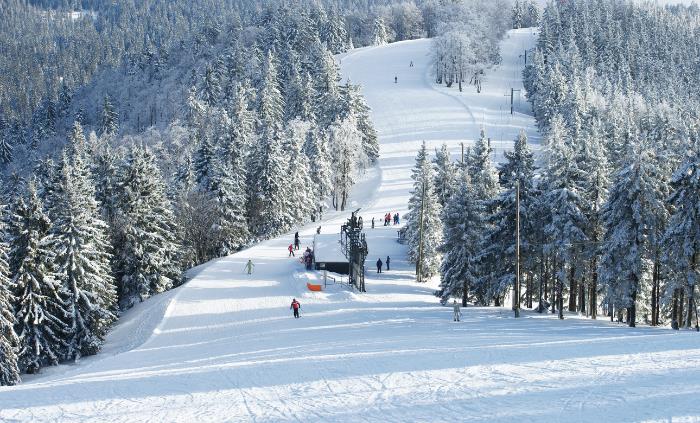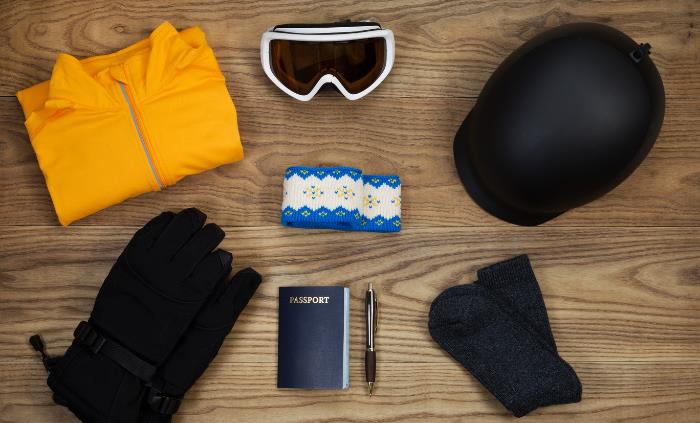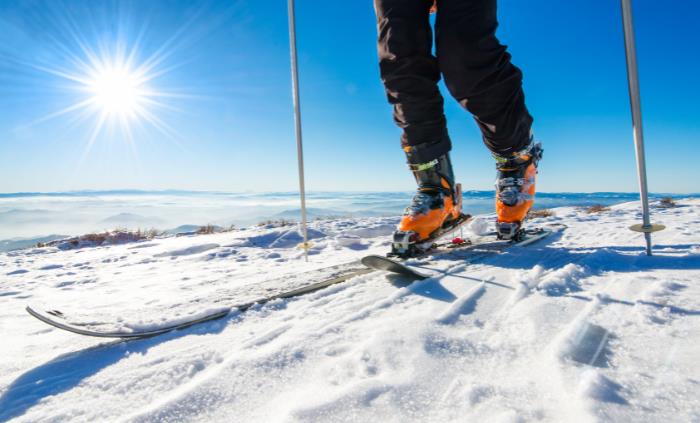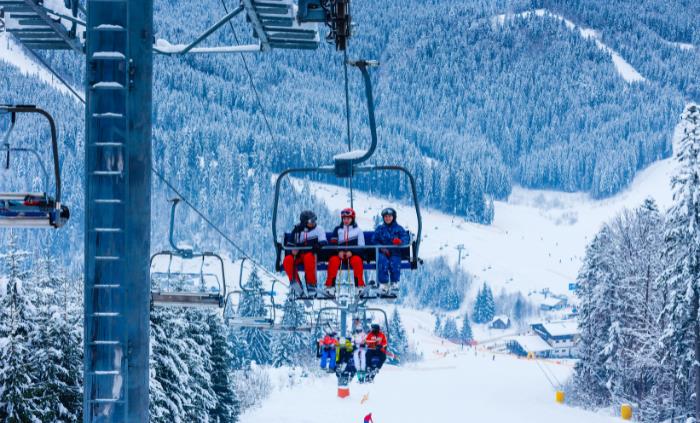
Skiing is one of the ultimate winter sports. If you’ve never tried it, it can seem intimidating, especially if you’re not familiar with similar sports, like ice skating or rollerblading. But conquering the fear will help you reap all the benefits skiing has to offer. Apart from building strength, burning calories, and supporting cardiovascular health, as an outdoor activity, skiing will also improve your mood. Besides, learning a new skill boosts cognitive health.
Skiing can also be a very effective way to build confidence and self-esteem. It requires a lot of practice and dedication, and the feeling of accomplishment from mastering a challenging skill can be gratifying. What could be more exciting than finding creative ways to move your body? And if you tend to suffer from the cold during winter months, skiing will give you something to be excited about every winter.
There is an infinite number of skiing tips, articles, and videos for beginners online. This can be a bit overwhelming, but then again, so is skipping the research and diving straight into the snow. That is why we gathered only the very basics you need to know if you’ve never skied before. We’ve divided them into four categories for optimal clarity. All you have to do is read. Hopefully, by the end, you’ll be equipped with some courage and knowledge for your skiing journey.
The video below will give you a good general idea of what to expect when visiting the ski slopes:

Learning any type of skill can be challenging, but your experience will depend greatly on your mentality and prior fitness. However, these tips can support your first skiing steps:
• Ski on freshly groomed slopes and avoid fresh snow.
• Don’t come in jeans! Avoid cotton clothes entirely, as they are not sufficiently insulating, have no moisture-wicking properties, and are not water resistant.
• As a worldwide convention, ski run difficulties are color-coded. Green is for beginners, blue is for intermediate, black is for advanced, and double black is for experts only. Some European countries use blue to mark both beginner and intermediate slopes.
• If you’ve never tried skiing before, or even if you only tried it once or twice as a child, we recommend investing in a few lessons with a professional teacher. You do not have to commit to the entire season – even just a few hours with a real pro can help you set good basic form.

As a beginner, you should rent equipment before purchasing it. This way, you’ll be able to test the waters before you commit to a significant expense. In addition, you'll be able to enjoy the latest equipment, as most ski rental shops get new gear every season.
• Invest in ski socks. They are thin, moisture-wicking, properly insulated and cushioning where needed.
• For maximum safety, rent a helmet.
• What to wear? The three-layer method usually works best. A lightweight, moisture-wicking base layer is the right option for every weather forecast. The next layer will be a warming, insulating layer (a fleece or wool jumper will do). The outer shell should be a windproof, waterproof, breathable jacket. Opt for Gore-Tex or similar fabrics.
• When trying on ski boots, know they should be very, very snug. Roomy boots may feel more comfortable at first, but they will cause foot cramps. This is because you will have to curl your toes, trying not to slide inside the boot when skiing.
• If you're especially sensitive to cold, invest in a buff and mittens instead of gloves. The video below explains the many ways you can wear a buff:

Skiing for recreational purposes is considered relatively safe. As a beginner, you’ll be progressing slowly down a mildly steep slope, and even if you take a fall, all those layers you’re wearing will soften the blow.
• If learning something new is exciting for you, you may be tempted to try and ski fast for the adrenaline rush. Resist this urge, and ski slowly until you build proper technique. This will help you both prevent injuries and enjoy the magnificent views.
• Wear sunscreen! At high altitudes, the thin atmosphere, combined with the reflectiveness of snow, can easily give you a sunburn. Don’t skip sunscreen, no matter the forecast.
• The day before you go skiing, check the forecast and plan your layers.
• Stay skiing on green and blue runs only – there’s no one to impress!
• Fill your pockets with snacks to keep you energized throughout the day. Skiing, even when done calmly and slowly, is a high-intensity activity, and you’re likely to spend several hours outside. Make sure you’re hydrated and well-rested before and after your skiing session.

• It is considered rude to stop abruptly in the middle of a ski run. If you need to stop, pull to the side of the run.
• Ski lift manners: if the lift can accommodate six people and you’re a party of two or three, link up with other people standing in line to fill up the lift. This will help the line run as quickly as possible.
• "Powder day" - a term describing the conditions on the slopes after heavy snowfall. These conditions can be rather challenging for beginners, so you might want to avoid skiing on these slopes.
• "Bluebird day" - the term for a beautiful day with clear blue skies and a shining sun. Don’t forget the sunscreen!
• "Moguls" - bumps on the slope that have not been flattened or groomed.
• "Corduroy" - lines on the slopes formed by snow cats. Corduroy snow is ideal for beginners, also referred to as groomed ski runs.
• "Bunny slopes" - your starting point, these are the easy and flat areas for beginners to learn to ski.